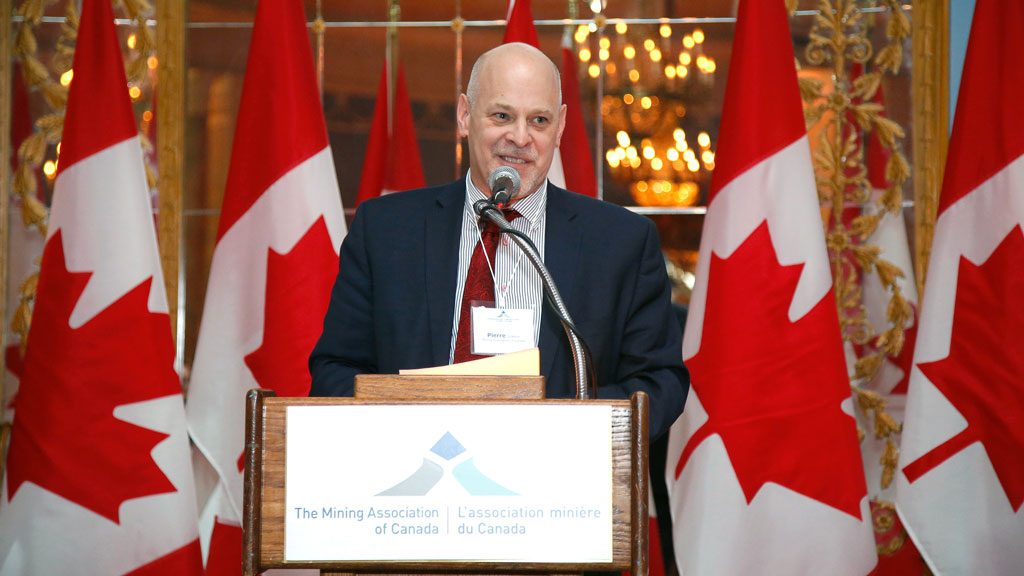The Mining Association of Canada has declared Bill C-69, the proposed new federal Impact Assessment Act, an improvement over its Harper-government predecessor, with its president and CEO Pierre Gratton suggesting that with proper implementation, C-69 will make Canada a more welcome place for mining investment.
Gratton recently wrote a commentary in which he came out in favour of C-69, which prescribes a new environmental approvals regime to replace the former government’s Canadian Environmental Assessment Act (CEAA) of 2012. The legislation includes a new mandatory early planning and engagement phase, the creation of a single government agency to lead assessments and co-ordinate Crown consultations with Indigenous peoples, and a broadening of the scope of the assessments to support “holistic and integrated decision-making,” according to a government fact sheet.
The bill is now in front of the Senate and the Mining Association of Canada is encouraging senators to pass it.
“The bill is not perfect legislation,” Gratton wrote. “For most mining proponents, it increases the likelihood of, but does not guarantee, timelier outcomes. It will not ensure that all proposed projects will be approved. It will reduce but not eliminate uncertainty.”
The development of a new mine can mean hundreds of millions or even billions of dollars in new work for the construction sector. When asked if Canada’s constructors would benefit from what he believes could be an expedited approvals system, Gratton said, “Absolutely.
“I don’t want to raise expectations, there will still be a complex process, but it is correcting some significant concerns we have had with CEAA 2012.”
Mining has represented 60 per cent all federal reviews under CEAA 2012 so the mining industry is in a special position to understand what doesn’t work and what could work better, Gratton argued.
“The status quo is not sustainable,” he said, adding it’s especially important to make the case at a time when investor confidence in the natural resource sector is at a low given that pipeline approvals are in limbo.
“It is an important message to investors that mining does continue to get through, we are not having projects rejected for the most part. There is the odd one, but the significant majority does get through,” he said.
What is needed is timeliness, certainty and efficiency, Gratton said, and if C-69 is approved and the new Impact Assessment Agency of Canada (currently the Canadian Environmental Assessment Agency), working with other new federal agencies and provinces, territories and Indigenous jurisdictions, implements it well, as the mining association expects it will, it will be good news.
“It could lead to greater confidence in the ability to bring projects forward in a timely manner, but it will take time, right?” said Gratton. “It will take time to have a few projects go through the new regime before it maybe has an effect on persuading some companies currently not pursuing Canadian projects to give them another look.”
Gratton identified four areas where the mining association feels C-69 is an improvement on CEAA 2012. First, it provides more tools to enable federal, provincial and Indigenous government collaboration on project assessments “to fulfill the elusive promise of one project, one review”; it strengthens the authority of the new regulatory agency to manage reviews across federal departments; it takes a more holistic approach to assessing the cumulative effects of various reviews; and by expanding the requirement to consult with Indigenous groups, it could lead to greater co-operation and thus increase certainty.
“There were two recent mining projects that were affected by the issue of cumulative effects that in one case faced an 18-month additional delay and another, four months additional delay. Those can be project killers,” said Gratton.
CEAA 2012 has increased the timelines of environmental reviews, Gratton said, but C-69 could reverse that.
“It should, and that’s a big should…lead to faster decisions on everything, and faster timelines before we get shovels in the ground,” he said.
“Is it going to be easy? No. Is it is going to be straightforward? No. Does it require good implementation? Yes,” he said.
With different jurisdictions, Canada has one of the heaviest regulatory burdens in the world for miners, so “any gain is welcome,” Gratton said.
Other issues the association feels require addressing are investments in infrastructure in Canada’s North, since the industry is “going North,” and U.S. tax reform, which makes Canada less competitive, he added.











Recent Comments
comments for this post are closed